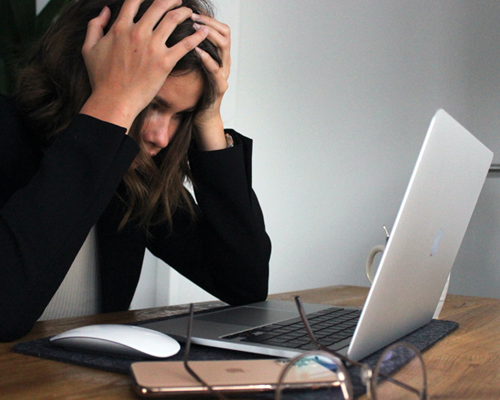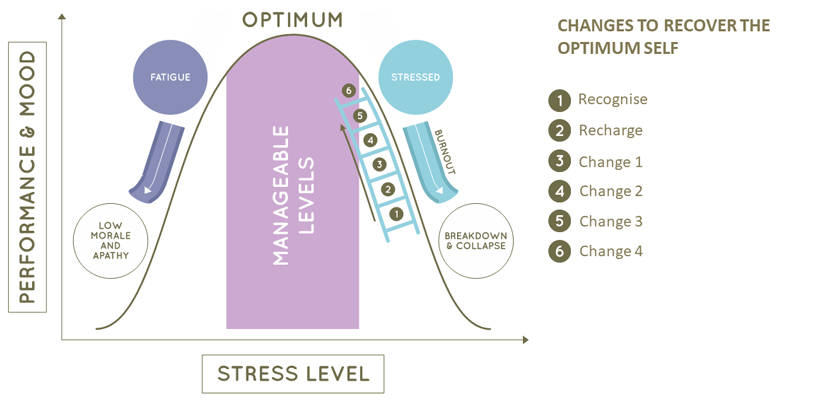Burnout is becoming a prominent fixture of our everyday lives, whether you see it being defined on social media, analysed in the news, or you may have personal experience. Even X-Factor judge Simon Cowell has spoken about how he’s taken the decision to slow down his busy lifestyle because he was ‘very nervous about burnout’.
This begs the question this Mental Health Awareness Week: How do you actually slowdown in the workplace? The numerous challenges that life in general bring may mean it’s difficult to do just that. We might feel the pressure to put the commitments work can bring, before anything else. For example, handling a never-ending list of tasks and managing other people can easily lead to going over your contracted hours and eating into your free time with friends, family and, most importantly, yourself.
However, it’s reassuring to know that, there are ways to cope so you can put your wellbeing and health first – and there are healthcare professionals who can expertly support you in this process.
Dr Catherine Sykes, one of the UK’s leading chartered psychologists spoke to us recently about burnout, her expertise on the topic and gives viable ways we can move away from burn out and towards shining bright, once again.

Breaking down burnout
Dr Sykes describes burnout as a ‘state of physical and emotional exhaustion’, which often involves a sense of reduced accomplishment and loss of personal identity. It’s easy to understand how we can lose our sense of selves when it comes to overwhelming amounts of work, but how are reduced accomplishment and burnout connected?
She goes on to explain that psychological rewards are important. So, while you may be dealing with demands and stresses that are high but not getting any praise or appreciation, it leads to a lack of meaning or purpose. In turn, this puts you at risk of entering the state of burnout.
There are different stages of burnout according to Dr Sykes. They involve a variety of different emotions and the resulting consequence of these that can lead to a very uncomfortable emotional state to be in. These include:
- Irritability
- Anxiety
- Feeling unmotivated
- Anger and rage
- Sense of detachment
- Numb and disconnected
These emotions represent a burnout slide, and the longer you’re on it, the more intense it feels. As well as negative emotions, physical manifestations of burnout such as insomnia, frequent illnesses and fatigue can take place.

Take a break? It’s easier said than done
If you’ve started to recognise any of these mental and physical sensations, you may feel like it’s time to address burnout. So, what can be done? Taking a break is one of the main solutions.
Firstly, our places of employment should have structures put in place for staff entitled to a work-life balance in the form of holidays – and on a longer-term basis, a sabbatical year. One professional that made the most of this is marketing and project manager Andreea Alina Selmare, who recently shared on LinkedIn News Europe her personal experience of a sabbatical.
Wait. I know you may be thinking something along the lines of ‘that’s lovely, but I don’t have the money to be able to take a sabbatical.’ It goes without saying that financial reasons may be a reason for some why a sabbatical isn’t an option. However, Andreaa’s didn’t have material possessions or money and was “really, really happy” volunteering for the European Volunteering Service.
Maybe a year off work isn’t doable for you. However, a long weekend, a week or two, are absolutely more achievable. So, you’ve got a holiday in mind. But do you still find yourself trying to find reasons why you can’t take it right now? It’s not unusual and Dr Sykes can empathise with this:
“On one level, it’s simple to say: ‘Go back to the place where you operate well’. But humans are complex. And it can be difficult. For some reason, the label of ‘burnout’ makes them think: ‘I’m weak.’
Weak? How so? “It makes them feel a deep sense of shame for recognising that they can’t cope with all of these demands. So, we have to deal with that first. We have to deal with the deep-seated sense of shame, just recognising: ‘My life might not be working for me, I might need to make some changes.’”
Put yourself first
It seems like it’s a tough journey to get to that point, but once you do, it seems only good things can happen, especially based on Andreaa’s experience. What’s really encouraging is that she sums up how, a year previous to her sabbatical she was “so incredibly tired” and now looking back at that time, she says: “I’m so grateful for taking the leap of faith and following the path that, in the end, felt more like a quantum leap.”

You may not make quantum leap like Andreaa, just a small step. However, like her, Simon Cowell and Dr Sykes’ advice, it’s clear that the act of putting yourself first can direct you away from burnout, and towards an altogether more satisfying road where you achieve the overall aim of burnout recovery: Working to live, instead of living to work.
Find your way to recovery from burnout with one of Top Doctors leading psychologists, today.








Join the discussion